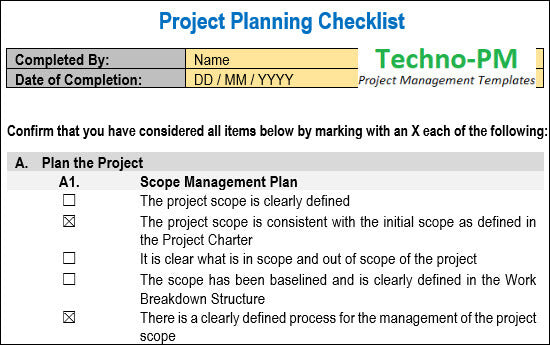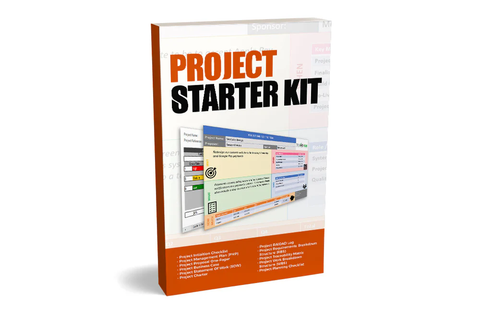Project Planning Checklist | Download Template and Sample Project Checklist
Why You Need a Project Planning Checklist?
It’s easy to forget how simple things are often the most important ones. And I don’t mean this in a philosophical sense, no. Or at least not just it. This pearl of wisdom is real for everyday life, yes, but equally valid if you manage a project. One of those simple things that are easily neglected is the project checklist/project planning checklist, mainly when we all know that projects don’t get completed by following a group of tick boxes. However, make no mistake, my friend: you are beholding a powerful tool.

What Does a Project Planning Checklist contain?
The planning phase is mainly focused on developing different subsidiary management plans that form the Project Management Plan. Therefore, in a project planning checklist, you will find a set of checks relating to:
- Scope Management
- Quality Management
- Human Resources Management
- Risk Management
- Communication Management
- Stakeholder Management
- Configuration Management
- Procurement Management
- Project Management Plan
The sentences used in the checklist target the minimum controls that need to be in place for the project planning to be deemed completed. This includes confirming that all knowledge areas have a defined process of their own, that roles and responsibilities are clear, baselines have been set, and that preferred or mandated methods, tools, and techniques have been identified.
After all, the Project Management Plan is the bible of the project and the primary reference to guide the project team. Hence, the more complete this mega-document is, the better, in this way removing any ambiguities and leaving no room for questions or poor guidance.
How To Complete a Project Planning Checklist?
Extremely simple: there is a checkbox, and there is a sentence. If you have completed the task stated in that sentence, you just need to tick the box next to it. Your project planning is complete when all the boxes are checked. Wow, it almost sounds like a game – should we play?
What Do I Gain By Using a Project Planning Checklist?
Time:
Saving time is an obvious advantage of using a checklist. Using a checklist, you are self-assuring your work, validating that you haven’t missed any step. If you notice that you missed one of the steps at some point in the process, you can correct it immediately, rather than waiting until a problem arises for you to notice the gap.
Organization:
Because the checklist is relevant to the whole planning phase rather than just to a particular document, you gain a helicopter view of how well you did (or not). You can find all this information in a structured, organized way.
Motivation:
With so much work to do in this phase, having a place where you can check your progress while you move along each of the steps and documents can boost the motivation of the project management team. Come on, we are 75%!
Delegation:
Most project teams dislike abstract concepts - we like tangible, measurable tasks. By having each of the project planning steps broken down in the project planning checklist, it is therefore much easier to delegate some of the work to the team (“we’re missing x, y, and z. Could you please help me with these?”)
Confidence:
If you are new to the organization or project management, you might not know where to start or what is expected of you. But fear no more; with a project planning checklist, you can clearly and quickly check what is required and learn your way through it. If you are an experienced PM, you can benefit from extra confidence and reflection too. There are enough benefits for everyone.
Quality:
If you are starting with the right foundations, you are managing a project built with quality, a real example for others, let’s even say it. The best part? You will comply with existing organizational or departmental procedures from the beginning and, therefore, won’t need to be chased by the PMO (not that PMOs are just about tracking, but they need to play police sometimes!).
Conclusion
Project checklists are not the most exciting thing on Earth, I admit, but they are easy to use and ensure that nothing is missed in your project, giving you a fighting chance for success. Take the example of the planning phase, for instance. In a project, this phase is typically where the project management team will spend a generous portion of their time, producing the various management plans for each of the knowledge areas of the project, from scope management to configuration management, and compiling all this information into a single Project Management Plan. With so much going on during this phase, would you risk trusting just your experience and intuition? Yeah, I don’t think so. Remember, failing to plan is planning to fail!
So, Let’s Try It?
- I have read all the words in this article.
- I really enjoyed this article.
- I have downloaded the template of a Project Planning Checklist.
- I liked this topic so much that I have also downloaded the sample of a Project Planning Checklist.
- I’m ready to start using a Project Planning Checklist in my project, and it’s going to be awesome!




